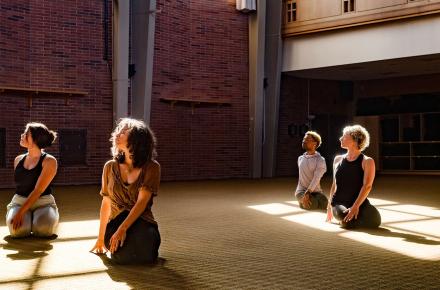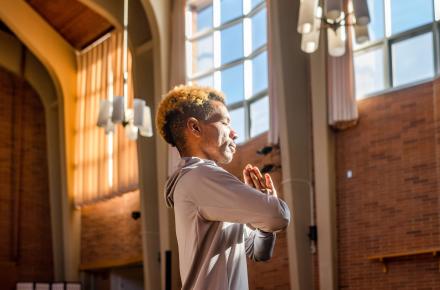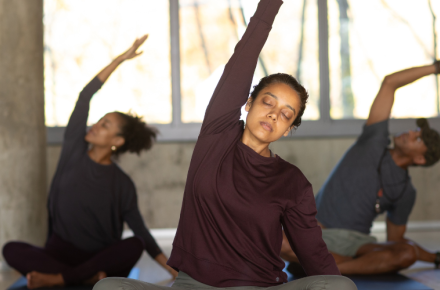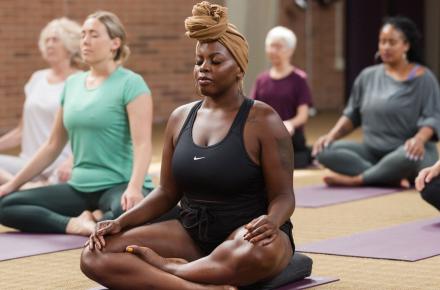Five Tips for Deep Relaxation and Better Sleep

Have you ever felt like you were half-awake or only half-asleep all night? I have, too. It’s so frustrating, especially when you know that you have a big day ahead and want to be feel sharp and well rested. Perhaps you don’t want to miss a moment of your vacation, or there’s an important conference you’re excited about.
As it turns out, half of your brain can sleep while the other half stays awake, according to research by sleep scientist Masako Tamaki and her colleagues at Brown University. They found that this usually happens when you’re sleeping the first night in a new place, such as a hotel, at a friend’s house, or while camping. The second night is much better.
It’s our brain’s attempt to protect us by going into survival mode. What happens is that the right half your brain sleeps while the left half stays alert, standing guard. How strange is that?
Scientists measured the slow-wave activity of the brain, something that occurs during deep sleep. They measured brain activity during light sleep by first playing one tone, and then playing a different tone. Surprisingly, the brain reacted to the variation in sound only on the left side of the brain; the right side stayed asleep.
Next, they played a sound loud enough to awaken someone. They found that, when it was transmitted into the right ear, the subjects in the experiment woke up faster than if it was sent to the left ear. The right ear is associated with the left side of the brain.
It stands to reason that it would be the left side of the brain that stays on duty, since it is known to be objective, analytical, and rational, and would be more prone to be protective, whereas the right side is best at intuition and abstract thinking. Could this phenomenon be at play when we’re sleeping in an unsafe neighborhood or household? What about when having to keep an ear out for a child or sick person? More studies are needed to find out.
Sleeping “halfway” is involuntary—the brain’s way of keeping you alert enough to save yourself if something bad happened. It’s most likely associated with the flight-fight-freeze response to stress. Because of this, scientists think there’s not much you can do about it, other than accept it rather than letting it bother you. Some suggest, if you’re traveling, that you go two nights ahead of your big day, since it’s so hard to sleep that first night.
Here are my suggestions:
- Make the room feel more familiar and safer to you. This will help trick the brain into sleeping better. Try using a familiar scent: Lavender is calming and aids sleeping. If you’re used to sleeping with a fan whirling away, bring one with you. Using your own pillow makes sense, too.
- Try yoga nidra. It’s a comprehensive practice done lying down, and can take you far beyond deep relaxation and mindfulness, to a place of peace and quiet that is tremendously restful. A special type of meditation that increases uplifting levels of awareness, it can also be practiced at bedtime as a sleep aid. It clears out layers of stress so they don’t follow you to bed and disturb sleeping. In fact, researchers say that one hour of yoga nidra practice, while not a substitute for actual sleep, is equivalent to four hours of sleep. This is due to the types of brain waves experienced along the way. Proven relaxation skills, specialized breathing techniques, guided imagery, and mindfulness are systematically used. You can download a recording to your listening device, put it on airplane mode, and listen by putting the ear buds or the device itself under your pillow. It will transmit right through your pillow and not disturb your sleep partner, if you have one.
- Use a mudra. These are yoga positions for the hands. Curl your fingers into a fist. On the same hand, touch the tips of the thumbs to the tips of the first finger to form a circle. Rest your hands with your palms pointing down. This helps bring on sleep and reduces stress by promoting a sense of safety and security.
- Breathe slowly and smoothly. To calm your nervous system, breathe in to the count of four or five, and then breathe out for five to 10 counts. When you get distracted, gently go back to focusing on your breathing.
- Practice the Moon Breath. This practice combines a mudra with breathing. Bend the index and middle fingers of your right hand to your palm, leaving your ring and little finger softly extended. Softly press your right thumb to your right nostril and inhale through your left nostril. Next, release your right thumb and press your ring finger to your left nostril while exhaling. In other words, in left/out right/in left/out right, and so on.
So even if you can’t sleep as soundly as you might like due to your brain’s instance on staying half-awake, at least you now understand the reason why. The above suggestions may lull you to sleep and, if they don’t, you will at least make use of the time in a positive, productive way.
Find out about upcoming programs with Julie Lusk.
This article originally appeared on Julie’s website, wholesomeresources.com.
















































